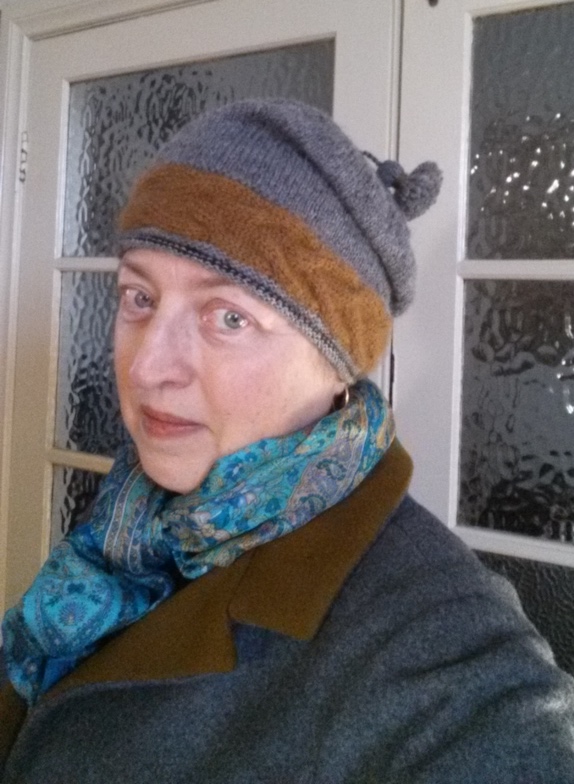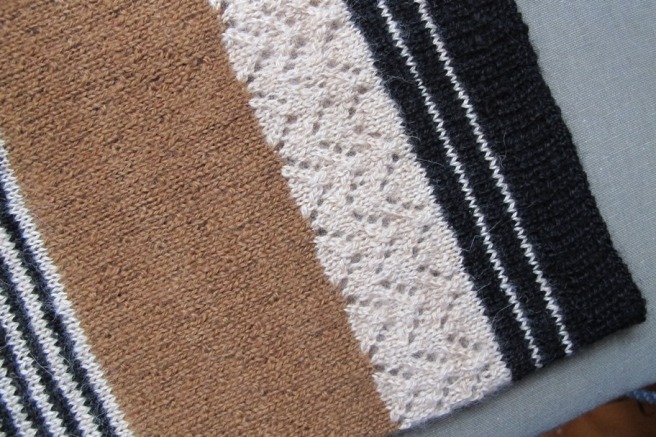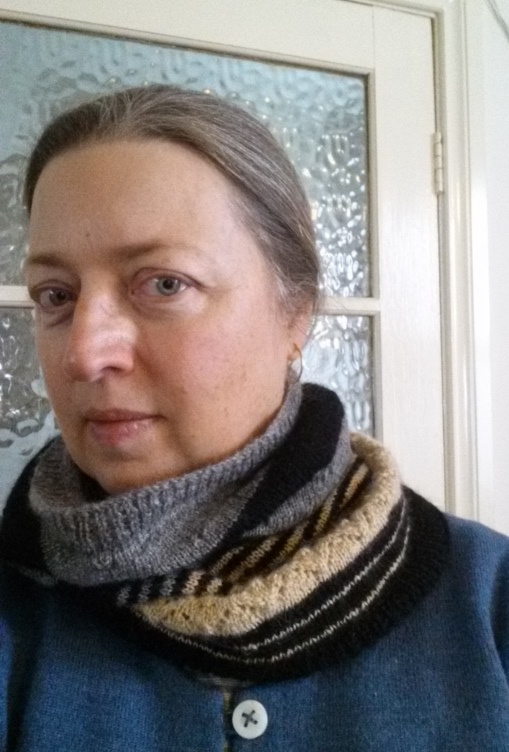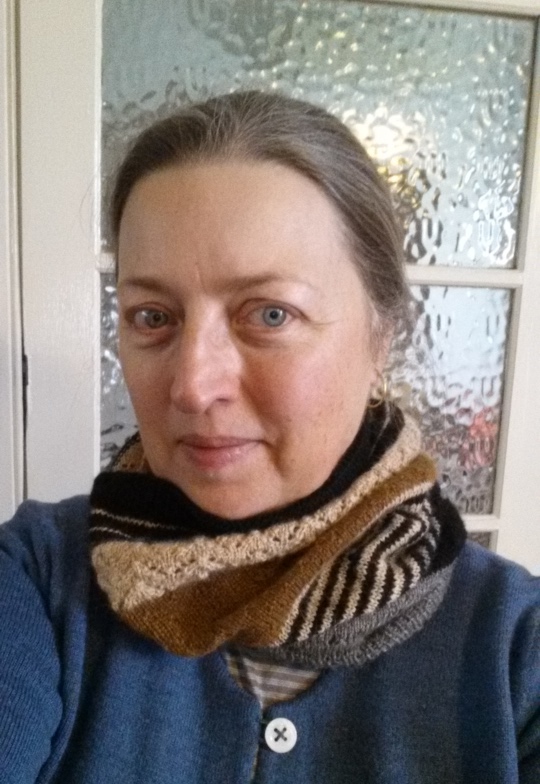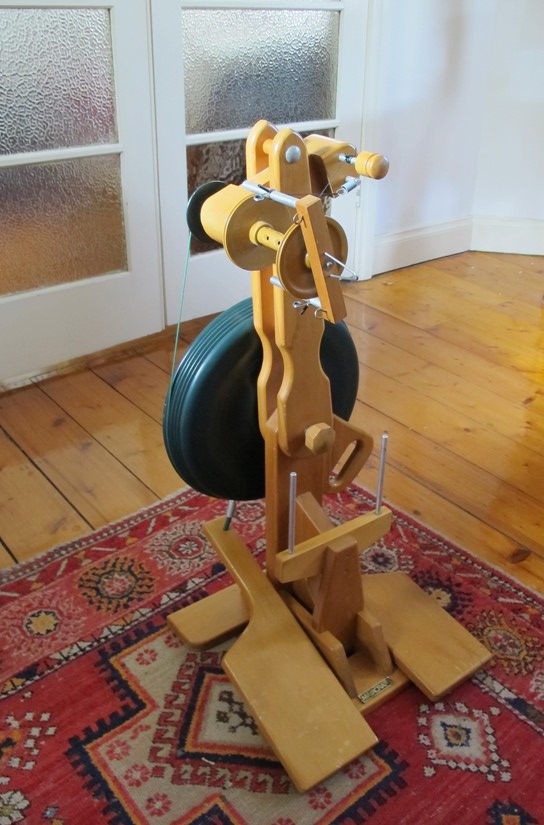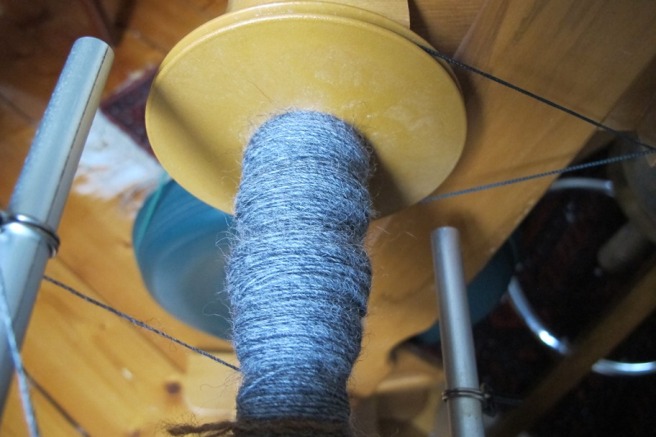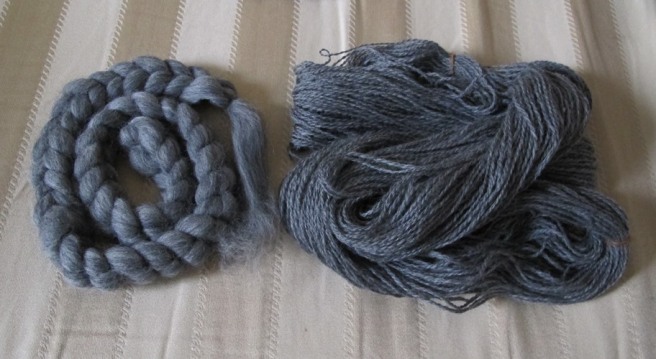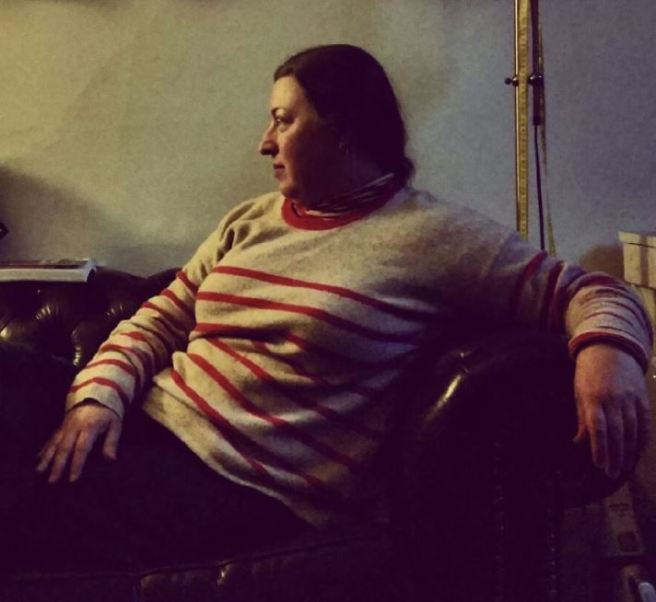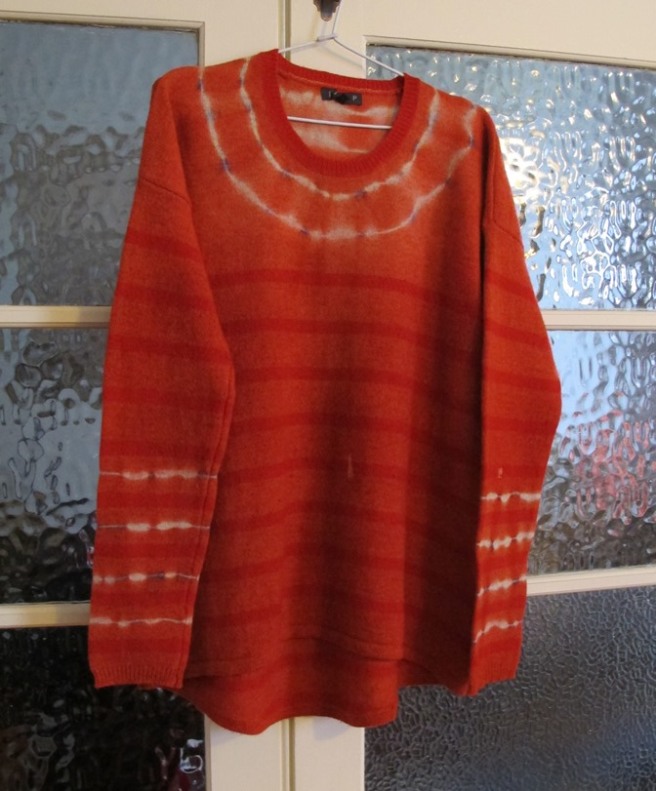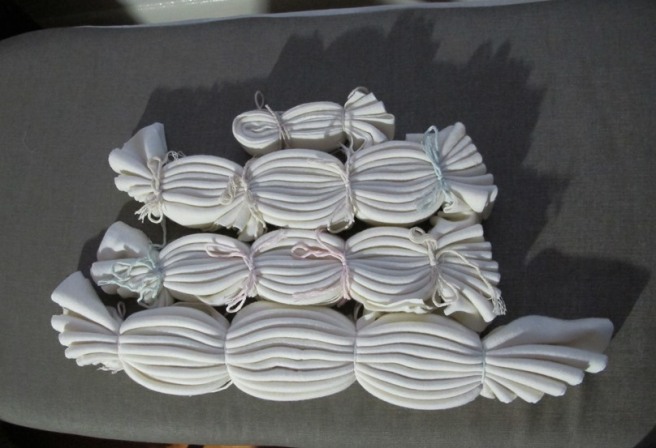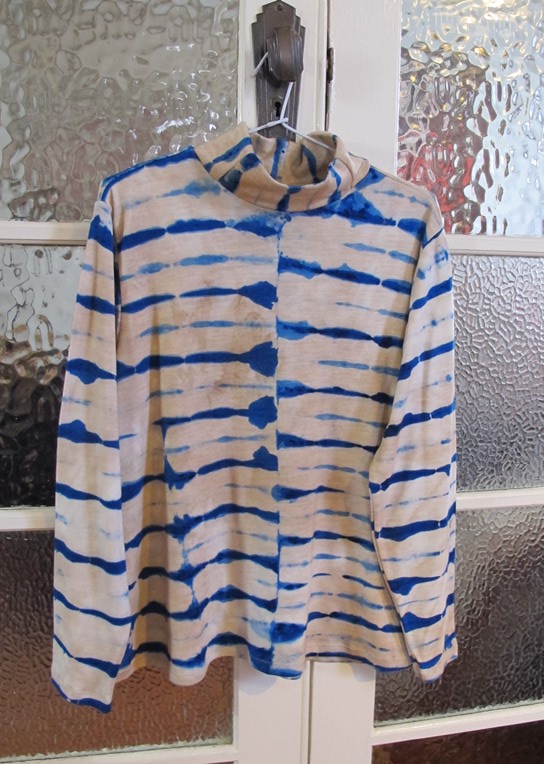A pretty hat!
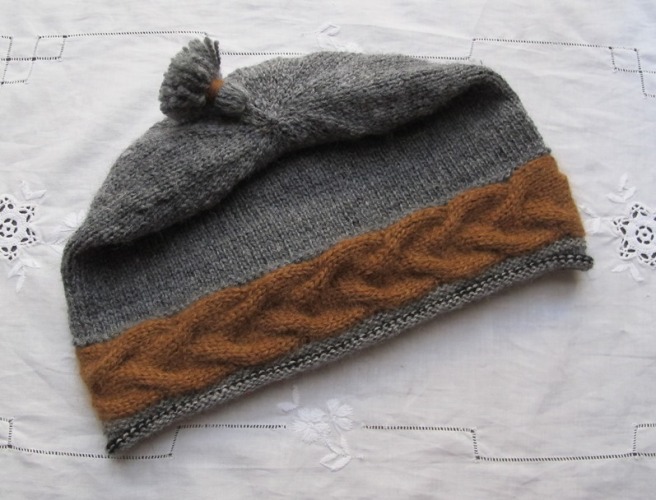
It’s made from leftovers of the beautiful fine alpaca I’ve been writing about recently, and the grey “Australian Wool” posted as New Wheel, First Spin.
It was made to match a jacket I made a few years ago, which hasn’t been worn a lot, partly because I didn’t have a hat that went with it. The colours are not absolutely identical but they are pretty close. The differences are even less noticeable with the separation delivered by normal wearing.
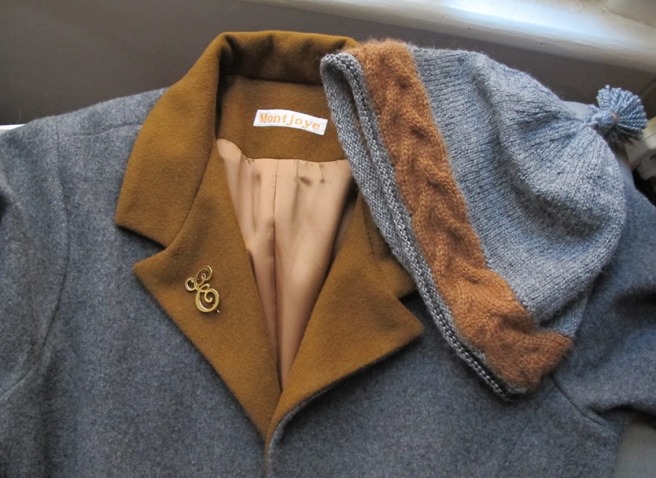
The pattern is based on “After the Frost Beret” by Melanie Berg. I’m extra pleased with myself because this little project required techniques that I haven’t used much. Cabling, Kitchener stitch grafting and an awful lot of picking up. I had to mess with the stitch counts and needle sizes etc due to using three(well, four) different handspun yarns and I have a larger than standard head for a woman.
You start by knitting the plait like cable band. I think this is the first iteration which turned out to be too dense. I used two strands together of the nearly lace weight caramel coloured alpaca. I went up to 4mm needles and knitted an extra pattern repeat.
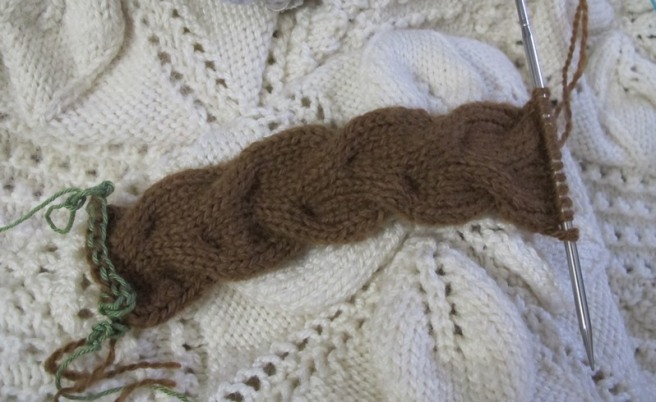
Then this band is grafted to make a circle and you have to pick up lots of stitches to knit the brim, then again for the crown.
I made my first picot edge! But couldn’t tolerate the ridge caused by the cast off. So I pulled it back and replaced it with a simple stocking stitch roll edge. The little black border is really because I ran out of the grey alpaca and using the caramel looked messy. I don’t mind it now I’ve seen it for a while.
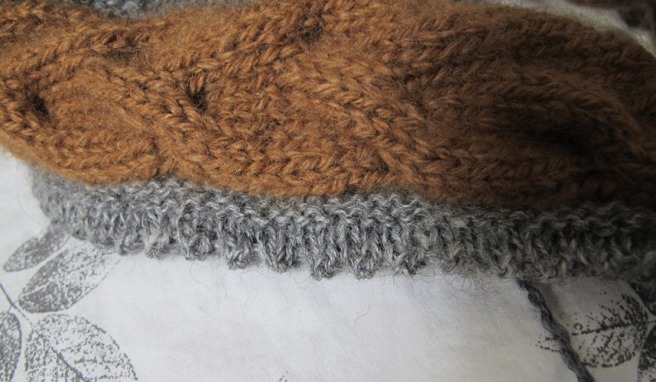
The crown ended up too tall, despite my theoretical calculations and decreasing twice as fast after I realised this was going to be the case. I could have pulled it back and reknitted… but just folding the excess to one side and adding a tassel is quite appealing I think.

